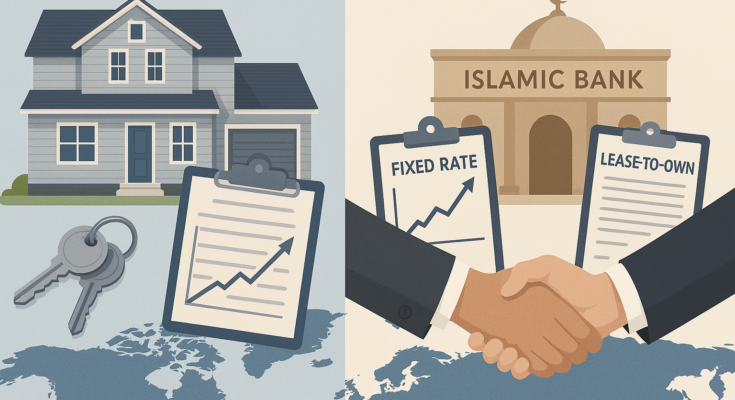Mortgages Decoded: Your Guide to Smart Home Financing Across the Globe
Imagine unlocking the door to your dream home today while spreading the cost over decades. A mortgage makes this possible—but navigating its twists and turns requires savvy. From fixed-rate deals to Sharia-compliant solutions, let’s explore how mortgages work, their perks and pitfalls, and why your location might shape your best option.
What Is a Mortgage?
A mortgage is a loan where the property itself acts as collateral. If you default, the lender (a bank or financial institution) can seize and sell the property to recover their funds. Think of it as a partnership: you get immediate ownership, and the lender gets assurance through the asset’s value.
Mortgage Basics: Breaking Down the Essentials
- How It Works: You borrow money to buy or build property, using that property as security. Fail to repay? The lender can reclaim it.
- Types of Mortgages:
- Fixed-Rate: Predictable payments with interest locked in for the entire term.
- Adjustable-Rate: Interest fluctuates with market trends—ideal if you expect rates to drop.
- Flexible Repayment: Start with lower payments that gradually increase, easing early financial pressure.
- Key Terms:
- Down Payment: Typically 10%–30% of the property’s value upfront.
- Loan Term: Ranges from 5 to 30 years, balancing monthly costs with long-term interest.
- Interest Rates: Lower than personal loans, but rates vary by type and lender.
Why Mortgages Shine—and Where They Stumble
✅ Pros:
- Affordable Entry: Spread payments over years instead of decades of saving.
- Lower Interest: Compared to credit cards or personal loans.
- Investment Potential: Build equity in appreciating property or rental income.
❌ Cons: - Risk of Loss: Defaulting means saying goodbye to your home.
- Long-Term Commitment: Monthly payments can limit financial flexibility.
- Hidden Costs: Legal fees, insurance, and maintenance add up.
Calculating Your Monthly Mortgage Payment
Example: For a $250,000 loan at 3.5% annual interest over 20 years:
- Monthly interest = 3.5% / 12 ≈ 0.291%
- Total payments = 20 × 12 = 240
- Monthly payment ≈ $1,450 (excluding taxes/insurance).
Why Mortgages Differ Globally: 4 Key Factors
- Lender Policies:
- Interest rates (fixed vs. variable), down payment requirements, and income thresholds vary widely.
- Government-backed loans (e.g., U.S. FHA loans) offer perks like lower rates for first-time buyers.
- Property Type: Residential loans often have friendlier terms than commercial ones.
- Local Laws:
- Strict foreclosure rules in some countries protect homeowners but slow lender recovery.
- Islamic mortgages (like Murabaha or Ijara) replace interest with profit-sharing or lease-to-own models.
- Economic Climate: High inflation or unstable markets (e.g., Egypt or Lebanon) can spike interest rates.
Mortgages Around the World: A Snapshot
- United States: 30-year fixed-rate loans dominate, with competitive rates and streamlined foreclosure processes.
- United Kingdom: Hybrid fixed/variable rates and incentives for first-time buyers.
- Gulf Region (Saudi Arabia/UAE): Islamic mortgages thrive, emphasizing Sharia compliance and lower down payments.
- Arab Markets (Egypt/Lebanon): Higher rates and limited access due to economic volatility.
Golden Rules for Mortgage Hunters
- Compare, Compare, Compare: Scour lenders for the best rates, terms, and flexibility.
- Crunch the Numbers: Use online calculators to test scenarios.
- Plan for the Long Haul: Ensure monthly payments align with future income stability.
- Consult Experts: A financial advisor can spot hidden risks or opportunities.


